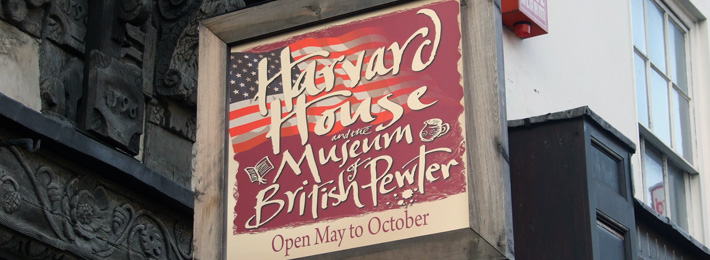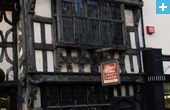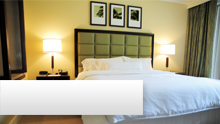Harvard House/British Museum of Pewter
Location: Shakespeare's Stratford > Stratford Upon Avon Attractions > Harvard House/British Museum of Pewter

 |
The building now known as Harvard House, in High Street, Stratford-upon-Avon, was built in 1596 by a wealthy townsman,butcher,corn and cattle trader Alderman Thomas Rogers, who had twice served as High Bailiff. The elaborately carved façade, which includes his carved initials along with a bull's head to denote his trade, is by far the richest example in the town, is testimony to Rogers's wealth and standing.
Various businesses were run from the premises over the years, including a blacksmiths,book shop, breeches makers and an estate agents. In 1909, at the suggestion and enthusiastic support of the internationally famous novelist and subsequent Stratford resident, Marie Corelli, the freehold was purchased by the American millionaire, Edward Morris of Chicago. After restoration, the building was given to Harvard University.
The link with Harvard dates from 1605 and the marriage in Stratford in that year of Katherine daughter of Thomas Rogers, the builder of Harvard House, and Robert Harvard of Southwark, like Rogers also a butcher. It was their son, John, born in 1607, who emigrated to America in 1637. On his death he left half his estate and his library to help found a college at Cambridge, Massachusetts, re-named Harvard College after him by an order of 1639.
Harvard University, through a British trust, administered the property until the Shakespeare Birthplace Trust assumed responsibility for it.
In 1996, it became the Museum of British Pewter following the generous donation to the Shakespeare Birthplace Trust of the Neish Pewter Collection and the fitting out of Harvard House to accommodate it.




